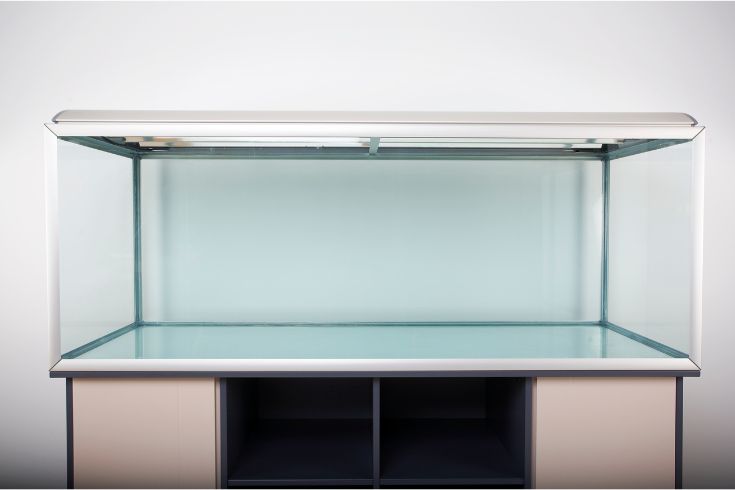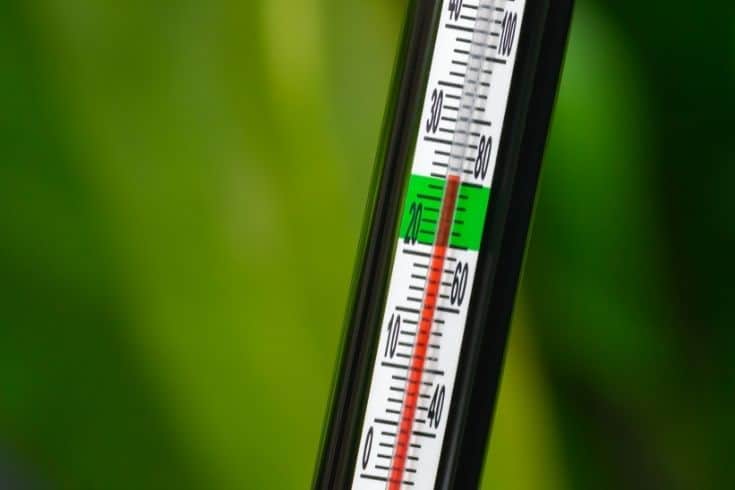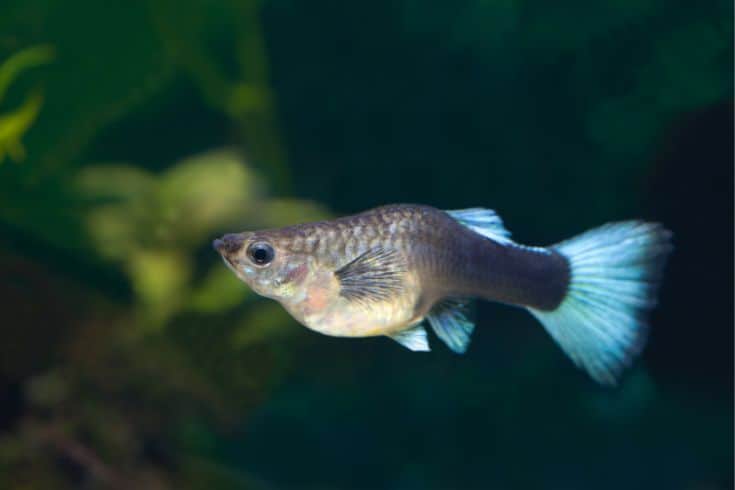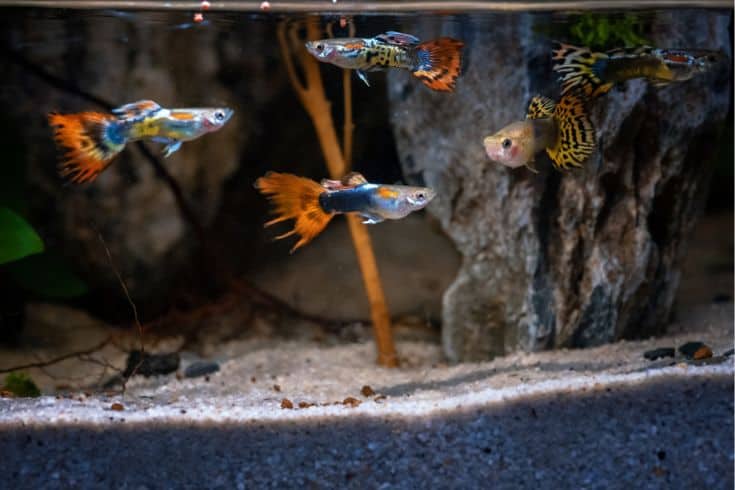Hailing from South America, the guppy fish is an adorable and popular aquarium species. But how many of these vibrant little fishes can you keep in a 10-gallon tank? Is it true that they need plenty of space, or can they fit comfortably in the confines of a relatively small tank? Understanding how to stock a tank is essential for any enthusiastic aquarist.
Generally speaking, it is recommended that no more than five guppies be kept in a 10-gallon tank. This is to ensure that their environment is sufficiently spacious and that their waste is not allowed to accumulate to levels that could become unsafe. In this article, we’ll discuss how many guppies in a 10 gallon tank can be kept together while maintaining optimal tank conditions.
How Many Guppies Can You Keep In A 10-Gallon Tank?
A 10-gallon tank is good for a school of 4-5 guppies. How did we come up with that number? Well, the most common rule of thumb for stocking a 10-gallon tank is 1 gallon per inch of fish. Therefore, a ten-gallon tank can fit 10 inches of fish, which is equivalent to 4-5 adult guppies. Though the size of guppies varies, 4-5 is the recommended number in order to create a healthy environment.
Of course, if you’re keeping newborn guppies, you can fit more fish in the tank. These tiny fish have a smaller bio-load than their adult counterparts, meaning less waste is created. As such, 10 gallons of water can easily accommodate a larger school of baby guppies, though you’ll need to make the necessary adjustments as they outgrow their tank.
Finally, many fish keepers breed their guppies in 10-gallon fish tanks. This is a popular option because you can strategically place 3 female guppies with 1 male guppy to ensure that breeding-related aggression doesn’t occur. Once the fry are born, it’s important to keep in mind that keeping a family of guppies in a single tank is not recommended, as guppy parents may eat the baby guppies.
10-Gallon Guppy Tank Requirements

Given the limited space of a 10-gallon tank, it’s important to remember to create optimal living conditions for your guppies. Here are some must-haves to look into:
Proper Filtration
Filtration is essential to maintaining a healthy tank environment. A 10-gallon tank requires a filter that can cycle at least four times the tank’s water volume per hour. This will help to keep water clean and oxygenated, and it will also help to break down fish waste. So, if you’re using a 10-gallon tank, your filter should be able to cycle at least 40 gallons of water per hour.
A good filter can also be fitted with chemical and biological filtration media. The former will help to remove toxins like ammonia and nitrites, while the latter will help to break down fish waste. Mechanical filtration media, like sponges and filter pads, can also be used to capture solid waste and debris. Usually, a combination of all three types of filtration media will yield the best results.
Whether you opt for a top-of-the-line external filter or a simpler internal filter, make sure it is suitable for your 10-gallon tank. The last thing you want is to end up with a filter that is too powerful and creates too much water current. Some of the best tanks for guppies even come with a built-in filter, though if you want to use the tank for other fish, an external filter may be the better option.
Adequate Heating
Another important factor to consider is the temperature of your 10-gallon aquarium. Guppies are tropical fish and require a water temperature between 75-82°F (24-28°C). To maintain this temperature, you may need to invest in an aquarium heater. Most 10-gallon tanks require a 25-50 watt heater, though this will depend on the ambient temperature of your room.

When selecting a heater, make sure that it is suitable for your tank size. Generally speaking, the larger the tank, the more powerful the heater should be. It is also important to choose a heater with an adjustable thermostat, which will allow you to fine-tune the tank’s temperature. It is also important to invest in a thermometer to help you monitor the tank’s temperature.
Finally, keep in mind that you should never turn your heater off and on frequently. Doing so can cause drastic fluctuations in temperature, which can be stressful for your fish. If you need to adjust the temperature of your tank, it is best to do so gradually. This is the best way to keep your guppies healthy as you tweak the parameters of their surroundings.
Tank Decor
Guppies are lively and active fish, so it’s important to create an environment that will keep them engaged. A 10-gallon tank should include some decor, using things like plants, rocks, and driftwood. Even faux rocks and fish castles will do the trick, as long as you make sure that they’re tank-safe. Every decoration piece will give your guppies plenty of places to explore and hide, which can help to reduce stress.
Despite the broad range of decorations available, our personal preference is to opt for live plants such as American waterweed and water lettuce. Plants are the source of life in aquariums, as they help to oxygenate the water and create a natural environment for your guppies. They also provide a great place for your guppies to spawn and hide from predators.
When decorating your 10-gallon tank, make sure to leave enough open space for your guppies to swim and explore. A good rule of thumb is to choose no more than three main decoration pieces and spread them out around the tank. This will create a balance between the decorations and the open swimming space, creating a pleasing aesthetic and an enjoyable environment for your guppies.
Population Control
This may seem like an odd one to include, but population control is actually essential when keeping guppies in a 10-gallon tank. As previously mentioned, it’s recommended that no more than five guppies be kept in a 10-gallon tank. Given how quickly guppies breed, population control measures are essential if you want to limit the size of your setup to just 10 gallons.
To help prevent overpopulating your tank, make sure to keep the males and females in separate tanks. You can start identifying the gender of guppies at around three months old. Male guppies tend to have brighter colors and bigger tails, while females usually have duller colors and less elaborate tail shapes. Female guppies also tend to be larger than their male counterparts.
Sometimes, even with the best of intentions, you may end up with a tank full of baby guppies. This usually happens because the female guppies were already pregnant when purchased. If this happens, it’s important to keep in mind that a 10-gallon tank is too small to accommodate a large school of baby guppies. As such, you’ll need to transfer the fry to a separate tank, or give them away.
Regular Tank Maintenance
Last but not least, regular tank maintenance is essential for any 10-gallon tank, especially if it is home to guppies. Guppies are active fish and produce a lot of waste, so it’s important to ensure that their environment is well-maintained. This includes regular water changes, cleaning the filter, and removing any visible debris.
A 10-gallon tank should be cleaned at least once a week, with a 25-50% water change. This will help keep nitrate levels low and ensure the water stays clean and clear. When performing the water change, use a siphon to remove any dirt and debris from the substrate. This will help to keep the tank looking its best and reduce the amount of waste in the tank.
It is also important to clean the filter regularly. This will help to remove any excess waste and debris from the tank, as well as helping to keep the tank aerated. Finally, make sure to check the pH levels of the water once a week, as guppies prefer water with a slightly higher pH. This can be done with a pH test kit, which will help ensure that your guppies live in a healthy and safe environment.
What Happens If You Overstock Your Guppy Fish Tank?
Beginner aquarists often assume that guppies can be crammed into tiny spaces such as fish bowls, but this could not be further from the truth. Overstocking a guppy fish tank can lead to several serious problems, such as:
Health Issues

Every fish produces waste, and an overcrowded tank can cause the water to become polluted. The toxicity of the water can then lead to illnesses such as fin rot, bacterial infections, and parasitic infections, many of which can lead to death or permanent disfigurement. In fact, a water change is often the only way to save the fish in such a situation, thus stressing the importance of proper stocking.
Health issues can also extend to more general conditions such as stress, which can happen when fish are overcrowded. Stressed-out fish may exhibit odd behavior such as darting around the tank, losing color, and even bullying other fish. They are also more likely to succumb to other illnesses and secondary infections, which can spread to the other fish in the tank.
Behavioral Issues
Another problem with overstocking is that the fish may become stressed due to the lack of space and resources. Though guppies are usually peaceful fish, the lack of space may cause them to act aggressively. In their bid to compete for a limited amount of space, they may establish dominance hierarchies, which can be extremely stressful for the fish.
Bullying is another issue that can arise in overcrowded tanks. This can include chasing, nipping, and territorial disputes that can cause a great deal of stress and injury to the fish. In a crowded tank, there is no crevice or safe space to retreat when bullied, making the situation even worse.
Environmental Issues

Finally, overstocking can also have a negative impact on the environment of the tank. With too many fish, there is not enough oxygen to go around, and the water can quickly become depleted of oxygen. This reduces the quality of the water, which can lead to a build-up of toxic gases and a decrease in pH levels.
In addition, the waste produced by so many fish can also create an ammonia spike, which can kill off beneficial bacteria in the tank and make it difficult to maintain the tank.
Overall, it is important to remember that overstocking your guppy fish tank is not a good idea. Doing so can lead to a number of health and behavioral issues, as well as environmental problems, all of which can be detrimental to the fish and their tank.
The Takeaway
Guppies can, and are often, kept in 10-gallon tanks. However, it’s important to understand the essentials of tank setup and maintenance to ensure that the environment is suitable for your fish. This includes stocking the tank appropriately, maintaining optimal water conditions, and providing adequate filtration. As long as these factors are taken into consideration, your guppies should thrive in their new home.
We hope this article has provided you with some helpful tips on how to properly care for guppies in a 10-gallon tank. With the right setup and maintenance, you’ll be able to create a safe and enjoyable environment for your guppies. If you found this article helpful, please consider sharing it with your fellow aquarists! Thanks for reading, and good luck with your guppies!